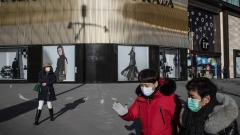Jan 2, 2019
The 21 best places to go in 2019, and when to travel
, Bloomberg News
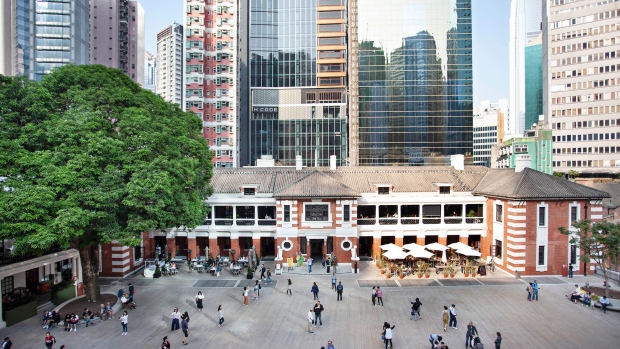
This year, treat your travel bucket list like your office to-do list and tackle the timeliest items first. That means sailing through Brazil’s jaguar-filled (and newly luxurious) Pantanal while everyone else heads down the Amazon, and skipping overdeveloped Bali in favour of Bodrum, where a five-star-resort renaissance is under way.
Those are just two of twenty-plus destinations to prioritize in 2019, all chosen by our trend-spotting editors and global correspondents for their so-hot-right-now status. Among their draws: skyrocketing cultural cachet, major hotel openings, and new restaurants worth traveling for. To help you get the most bang for your buck, we’ve accompanied each recommendation with exclusive data from Google and tips from our favorite travel specialists. As we’ve learned before, the ideal time to travel isn’t always related to cost.
Start packing: it's going going to be an exciting year ahead.
KENYA
If you don’t have the flexibility for a long trip but have always wanted to watch 1.7 million wildebeests thunder across the Maasai Mara, this is the year to realize your wildest dream. A new nonstop route on Kenya Airways from New York’s JFK to Nairobi makes the country’s charms— witnessing the Great Migration, shopping for elaborate beaded jewelry, and riding camels in the desert—more accessible to East Coasters than ever. The 14-hour flight lands in the capital in the morning, so you can make it to your safari camp in time for lunch and an afternoon game drive.
An hour by plane from Nairobi, you can be at the new Sanctuary Olonana, whose 14 glass-walled suites have wide decks facing the Mara River, or &Beyond’s recently rebuilt Bateleur Camp, where you can watch elephants graze while you bask in a crescent-shaped infinity pool. Or skip the savannah altogether and head for Kenya’s beaches, which are less developed than Zanzibar’s or Mozambique’s. Lamu—an island with a Unesco-protected, 14th century Swahili village and colorful sailboats lining its harbor—is an underrated favorite and well worth the extra (short) trip. Get there fast: Just like Nairobi, the beach destination is benefiting from increased and affordable air travel, and crowds are sure to follow.
When to go: September, after the crowds have gone but while the migration is still crossing the Mara. January and February also rank high as a time to spot newborn wildlife.When not to go: April and May. Rain makes the roads hard to navigate. Also avoid overcrowded July and August.Whom to call: Teresa Sullivan of Mango Safari
NORTHERN CHILE
This summer, tackle two big bucket-list items on one vacation. On July 2 a total solar eclipse will dazzle northern Chile—whose clear skies and lack of urban light make it one of the world’s best stargazing regions. View the show from the Elqui Valley, where the boho-chic CasaMolle hotel recently opened, and local wineries include Tabalí and Falernia. From there it’s just a 90-minute flight to the otherworldly Atacama Desert.
Boutique travel company Upscape is offering a five-day itinerary that includes eclipse-viewing from a deluxe tented camp in Elqui, combined with an overnight in Santiago. Members-only travel club Prior has a two-week trip that runs from Patagonia up to Atacama, with a stop for skywatching at a mobile camp in the Araucanía lakes region. And the high-end group tour specialist Intrepid has introduced an 11-day journey with “star” astronomer John Mason. Book quickly; opportunities like these may truly come once in a lifetime.
When to go: In extreme environments such as the Atacama, it’s smart to plan your trip for the milder spring and fall months. (Remember the seasons are inverted here if you’re coming from the northern hemisphere.) But this year, the eclipse warrants a notable exception.When not to go: Even the world’s driest desert has a rainy season: It spans January and February. Expect below-freezing temps come June, July, and August.Whom to call: Emmanuel Burgio of Blue Parallel
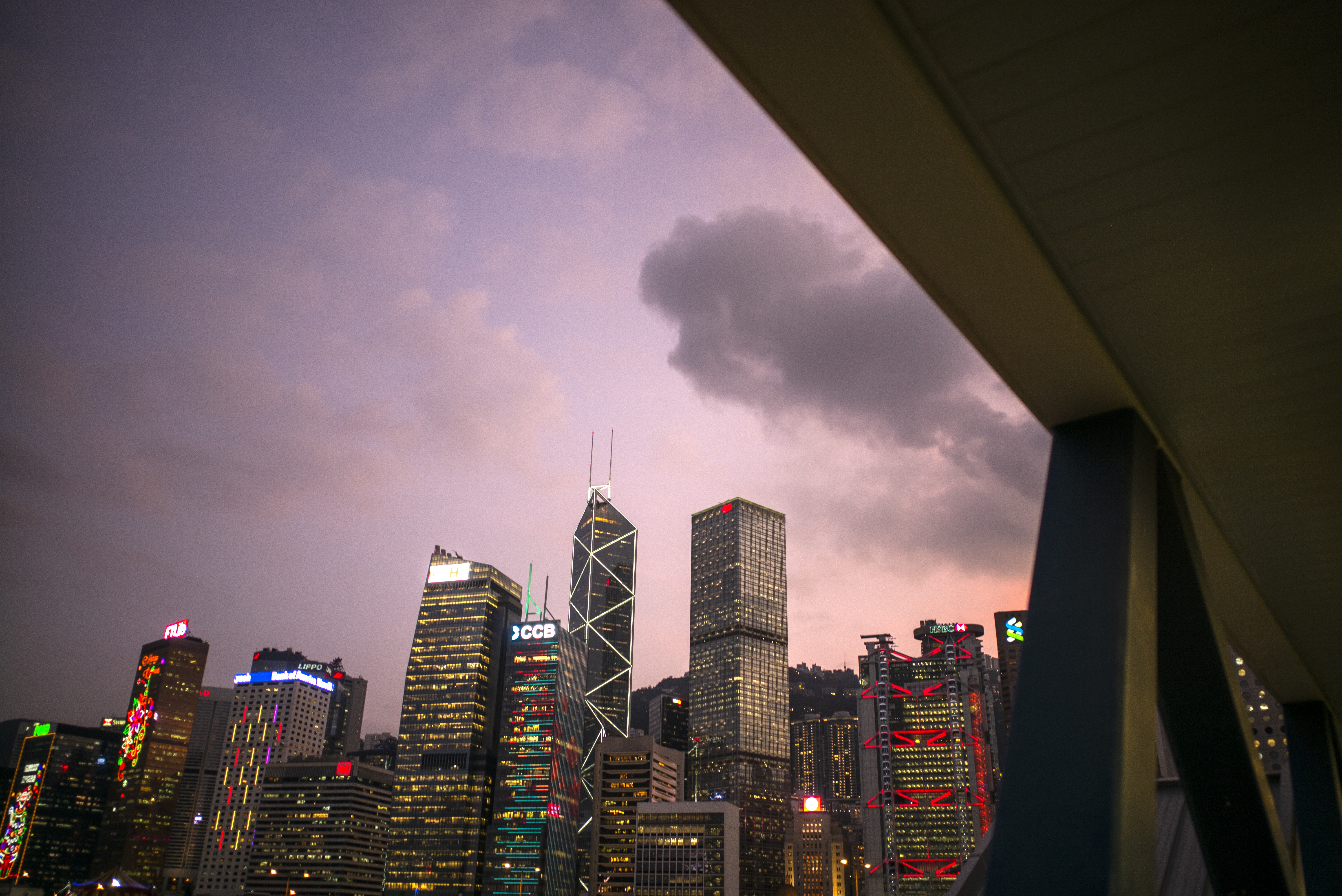
HONG KONG
Amid the dense tangle of skyscrapers in Hong Kong, two entirely new neighborhoods are emerging. On the east end of Tsim Sha Tsui in Kowloon is the $2.6 billion waterfront development known as Victoria Dockside, a burgeoning arts and design district transformed by the architects of New York City’s High Line. The Avenue of Stars that snakes around the development reopens in February, but the precinct will come of age when the 43-floor Rosewood Hotel opens in March.
From there, a five-minute Star Ferry ride to the Island side of the city takes you to the 170-year-old police compound of Tai Kwun, which has been reborn as a vibrant cultural zone with the debut of the JC Contemporary art gallery and JC Cube theater last summer. The must-try stops: Dragonfly, a cocktail lounge with stained-glass windows; the Armoury rooftop bar with its views of the city’s neon skyline; and Old Bailey, a restaurant that spotlights Jiangnan delicacies such as Hangzhou smoked pigeon.
When to go: For idyllic, mild temperatures—still warm enough to visit the city’s outlying islands—plan for spring or fall. Or go the super-festive route and travel during Chinese New Year, which lasts from late January to early February.When not to go: July and August are hot, humid, and often wet. Also be wary of Chinese national holidays, when tons of domestic visitors flock to the city.Whom to call: Mei Zhang of Wild China
THE PANTANAL, BRAZIL
It’s not as well-known as the Amazon, but the Pantanal, the planet’s largest wetland, harbors the greatest density of fauna in South America within its network of verdant marshes and river trails. The more than 1,000 species—including stalking jaguars, flamingolike spoonbills, and mohawked tapirs—are concentrated in an area in Central-West Brazil the size of Kansas. Before now, limited transportation infrastructure made them difficult to come and see.
On new itineraries from Red Savannah, though, travelers can sail through the tributaries of the Paraguay River on the region’s first luxury expedition ship. The M.V. Peralta has 10 glass-fronted suites, an upper-deck plunge pool, and Zodiac rafts for deeper explorations throughout the floodplain. Or travelers can touch down on a 28-seat private jet courtesy of TCS World Travel, which is adding the region to a trip designed to hit the many highlights of Brazil.
When to go: During the dry season, from May to October, you’ll maximize your chances to see jaguars, furry capybaras, and many, many butterflies.When not to go: The wet season, from November to April. The plains are flooded—and that means mosquitoes.Whom to call: Charlie Lockwood of Red Savannah
GRENADA
Grenada’s run as an overlooked Caribbean destination comes to an end with the arrival of two game-changing resorts, both on powdery Grand Anse beach. The just-opened Silversands provides the island’s first injection of St. Barth-level sophistication. Its 52 rooms, suites, and villas are done in a minimalist, organic style, with pale wood floors and decks, white marble fixtures, and floor-to-ceiling windows. A dramatic 100-meter infinity pool—thought to be the longest in the region—cuts from the lobby all the way to the shore, while the two restaurants showcase the island’s famous spices.
By next year, the resort will gain competition from an all-inclusive Royalton and Kimpton’s Kawana Bay Resort, a glass-fronted, jungle-wrapped follow-up to the company’s red-hot hotel in Grand Cayman. Plus, getting there just got easier: American Airlines now has direct flights to Grenada from Miami, and Air Canada is making the five-hour trip from Toronto.
When to go: January to mid-April is high season for a reason—you’ll have the best chance for cloudless, sunny days.When not to go: Steer clear of hurricane season, from June to November, along with the overpriced winter holidays.Whom to call: Margie Hand of Andavo Travel
FALKLAND ISLANDS
There are more penguins than people in this remote British territory near Antarctica. Still, the archipelago is better known as the site of a 1982 war between the U.K. and Argentina, which continues to claim sovereignty and calls the islands the Malvinas instead. With tensions between the governments easing, the Falklands are slated to become more accessible.
Rather than arrive on a cruise liner—or by nabbing an expensive seat through the Royal Air Force, which runs a semiregular flight from a military base outside London—you’ll soon be able to fly in on Latam Airlines via São Paulo. Also making it easier to explore the windswept islands are nature-focused, land-based tours from Intrepid Travel. Visitors stay in comfortable lodge-style accommodations in the capital of Stanley, a onetime cargo service center that’s become a surprisingly robust adventure hub. Surrounding the town are rugged landscapes for trekking, wide grasslands for four-by-four rides, and unexplored beaches filled with elephant seals—and all those cute, waddling birds.
When to go: October to March, when the weather is at its warmest and the wildlife-spotting is at its best. Plus, drier and clearer skies make ideal conditions for photographers.When not to go: April to August, when the days are cold, dark, and wet.Whom to call: Brian Pearson of Upscape Travel.
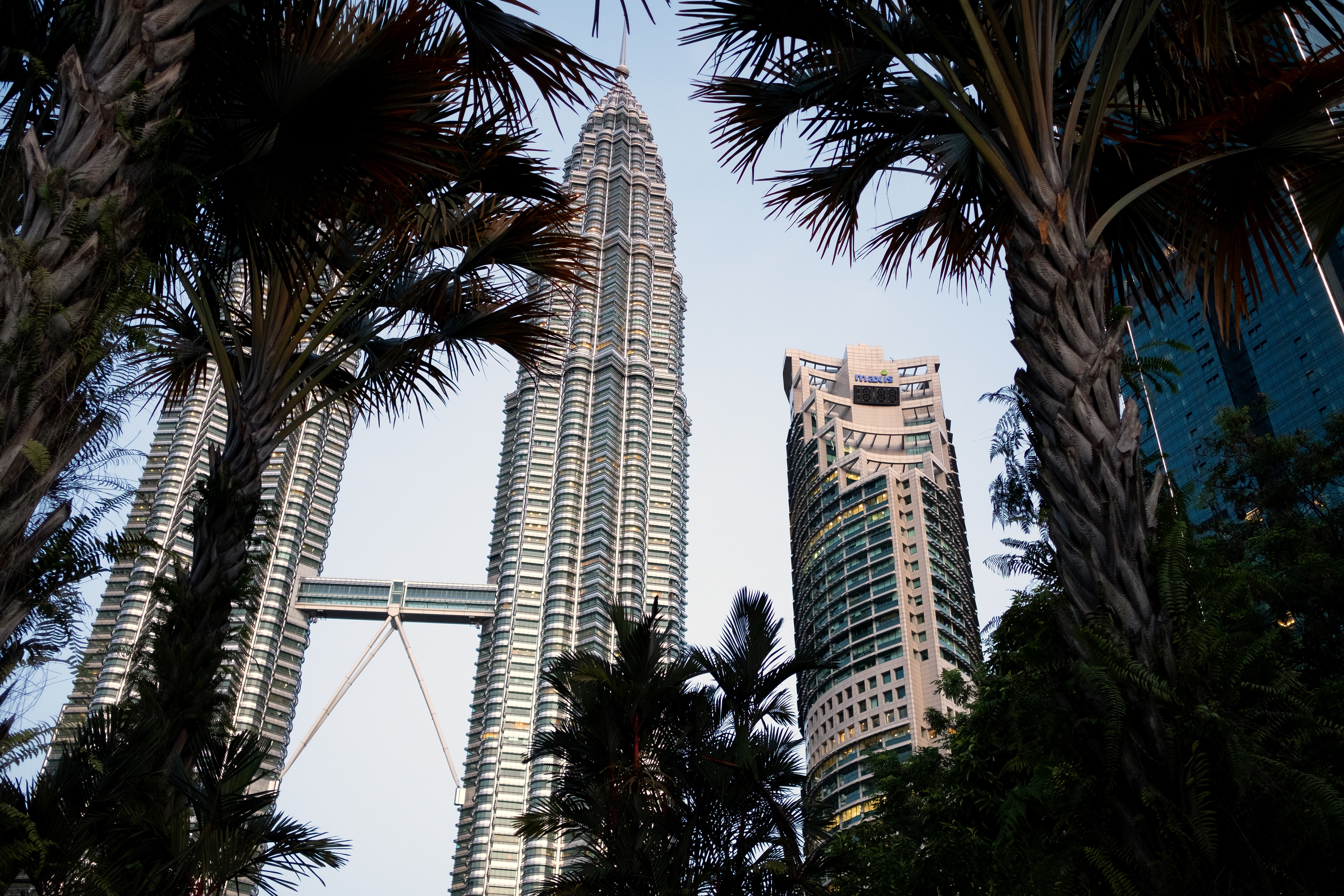
KUALA LUMPUR
Travelers en route to Malaysia’s idyllic islands usually bemoan a pit stop in the chaotic capital; now, with Kuala Lumpur upping its hospitality game to rival those of Singapore and Hong Kong, a layover here is part of the fun. The evolution started with some much-needed contemporary luxury hotels, including the city’s first Four Seasons (the third tallest hotel in the world). Equally impressive is the 253-room RuMa Hotel and Residences, which opened in December with a cantilevered deck and infinity pool that offer one of the best views of the Petronas Towers.
About that skyline: This year it welcomes the Exchange 106, slated to be the tallest building in Southeast Asia, as part of the emerging Tun Razak Exchange financial district. The culinary scene—once dominated by hawker stalls—has been elevated, too. Saint Pierre, a popular French restaurant from Singapore, serves Asian-accented bistro classics such as pan-fried foie gras with lychee and apricot. And Dewakan is driving traffic to an unassuming university campus for slow-cooked red snapper with temu (a root spice) and other dishes that spotlight indigenous Malaysian ingredients.
When to go: It’s always relatively warm, but May to July are the driest months. Alternatively, go during Diwali (November) or Chinese New Year (February) for especially festive vibes.When not to go: Rain can be an issue here, particularly in March or April and from September to November.Whom to call: Andrea Ross of Wild Frontiers Travel
NORWAY
As travelers with time and money increasingly seek isolation and quietude, the way-north is seeing an uptick in year-round tourism. Yet Norway, the postcard for arctic bliss, hasn’t been capitalizing on that trend. That’s largely because there are few places to stay; above-average national wages make high-touch hospitality a pricey business proposition. Slowly but surely, entrepreneurs are finding workarounds—namely, by creating intimate resorts with small staffs.
Lyngen Lodge, famed as a place to view the aurora borealis, has eight bedrooms beneath a thick grass roof, and it’s only 65 miles west of charming Tromso. Farther afield is Finvag, a lovingly refurbished boarding school set on its own fjord—with its own small fleet of boats. This year the country estate Amot, just north of Bergen, will transition from exclusive-use villa to boutique hotel—meaning you can book one of its eight suites instead of the whole home. It makes a great base for fishing and kayaking adventures in the Tolkienesque landscape of mountains and glacial rivers.
In Oslo the new jazz-inspired Amerikalinjen hotel is your jumping-off point to remote locales such as the jagged crags of Lofoten or even the polar bear-filled island of Svalbard, both above the Arctic Circle. And more developments are on the way, as Marriott International Inc. brings its youthful Moxy brand to Bergen, and Aman Resorts founder Adrian Zecha considers a few tundra-bound projects. By the time Svart, the world’s first energy-positive hotel concept (fueled by geothermal and solar power), opens in 2021, Norway will have completed its five-star transformation.
When to go: If you want more daylight hours than you’ll know what to do with, visit from May to August.When not to go: From October to January, the weather is cold, wet, and dark. Of course, these are also the prime months to see the Northern Lights or ski the fjords. The earlier in the season, the less treacherous.Whom to call: Tom Marchant of Black Tomato
CHAD
Your window for visiting Africa’s next great frontier has only just opened, and already it’s about to close. Chad, whose national parks had been blighted by poachers, is now the model for successful conservation (even if its border regions still generate midlevel warnings about crime from the U.S. Department of State). Nowhere is that more evident than Zakouma National Park. Between 2002 and 2010, all but 5 percent of the area’s elephants had been gunned down for their ivory; now it’s teeming not just with enormous herds of pachyderms, but with all the Big Five species. (Even the elusive black rhino has been reintroduced.)
Credit goes to African Parks, the trailblazing conservation organization presided over by Prince Harry, which has worked with the local population to transform the area. The organization runs the only two lodges in the park, a basic proposition called Tinga Camp and the far more swanky Camp Nomade. Booking the latter’s six canvas-walled, zero-footprint tents makes for total seclusion: guests wake up to the sound of roaring lions, survey the plains with expert guides, never see another safari vehicle, and enjoy elaborate meals by night. Come 2020 African Parks will begin limiting reservations to those travelers making substantial philanthropic commitments, raising the exclusivity of this epic experience while ensuring its protection for years to come.
When to go: You’ll find the densest concentration of Big Five sightings in Zakouma from January to early April—though March may be the single most animal-abundant month of the year.When not to go: Late April through November. The park is closed due to scorching temps and heavy rains.Whom to call: Nicola Shepherd of the Explorations Company
THE BALEARICS
After a tumultuous few seasons in which Formentera, Ibiza, Mallorca, and Menorca were almost overrun with tourists, Spain has taken strides toward restoring a sense of lazy, languid idyll to its islands. For one thing, it banned Airbnb last year and put an end to new hotel licenses in hopes of curbing overdevelopment.
The openings across the Balearic Islands that were grandfathered in are now countering the thump-thump nightlife reputation Ibiza created. In the fortified, Gothic center of the city of Palma de Mallorca, you’ll find Es Princep, a contemporary five-star hotel with ocean views, and the intimate and art-filled Can Bordoy. (You won’t see a DJ at either.) On Formentera, there’s Etosoto, an organic farm with 10 beachside rooms. Experimental Menorca, a nine-villa estate surrounded by wild gardens, also opens this summer.
Of course, getting to the archipelago is half the fun. If you pass through Madrid, the Prado Museum is celebrating its 200th anniversary, and the Hotel Ritz has been impeccably restored by Mandarin Oriental Hotel Group Ltd. Or start in Barcelona, and you’ll be a quick detour away from chef Ferran Adrià’s soon-to-open research lab and gastronomic museum, elBulli 1846.
When to go: The bookends of summer’s high season—May, June, September, and October—are ideal, especially if you want a spot to yourself on the beach. The grape harvest festival in Mallorca each September is as rowdy and fun as Valencia’s tomato-throwing holiday.When not to go: Wet, cold weather closes down the islands from November through April.Whom to call: Virginia Irurita of Made for Spain and Portugal
THE ENGLISH COUNTRYSIDE
Next time you land at Heathrow, take the train away from London rather than toward it. Within an hour, you’ll arrive at one of Europe’s buzziest new hotels: Heckfield Place, a Georgian manor house in Hampshire that finally opened in the fall after a six-year delay. The wait was worth it, particularly for foodies, who can enjoy rustic, open-fire meals by chef Skye Gyngell of London’s acclaimed Spring. Ingredients come from the hotel’s biodynamic farm and gardens.
For a more tranquil experience, visit Monkey Island Estate, in the middle of the Thames near the jewel-like village of Bray. Reachable by footbridge or boat, the island has been the haunt of monks, aristocrats, and artists during its 800-year history. After falling into disrepair in the 1980s, it’s been revitalized as a posh guesthouse with a decadent afternoon tea and 41 rooms designed by Alexandra Champalimaud. If you’re after a more traditional Downton Abbey vibe, try the House at Beaverbrook in Surrey. Its $90 million renovation preserved old-world flourishes such as a 1920s-style brass bar, waistcoated servers, and 18 rooms named for famous guests like Elizabeth Taylor and Winston Churchill.
When to go: Spring, when flowers are in bloom and you can feed newborn lambs at local farms. And mid-fall, to see the area awash in autumnal color.When not to go: January. Cold weather is no good for a countryside vacation.Whom to call: Nicola Butler of Noteworthy
BHUTAN
More luxury options and a newly expanded airport mean Bhutan is no longer a bucket-list stop for only the temple-gazing crowd. Take the six-month-old, 22-room, all-inclusive Bhutan Spirit Sanctuary: Its wellness-oriented programming focuses on yoga, meditation, and spa treatments that employ foraged medicinal herbs.
If that hotel’s goal is to leave guests with a restful mind, safari operator &Beyond is catering to those with restless legs. At its forthcoming riverfront camp in the lush Punakha valley, travelers will spend their days kayaking the Mo Chhu River’s crystal-clear waters and hiking past rice paddy fields punctuated by ancient fortresses. These newcomers offer a more immersive experience than Bhutan’s long-established luxury circuits, which shuttle guests around a half-dozen Como or Aman Resorts hotels scattered throughout the country. But if that type of broad overview is what you prefer, try the new lodges from Six Senses Hotels—they’ll open by summer in five special locations secured through connections with the royal family. You won’t find crowds: A nationwide, $250-a-day visitor fee helps keep tourism numbers blissfully low.
When to go: In the off-season—mid-November through February—hotel occupancy drops, the post-monsoon skies are clear, and the black-necked cranes return to the Phobjikha Valley for the winter. In the spring, the rhododendron forests burst with color and the weather is mild.When not to go: Showers and misty skies can obscure mountain vistas in the summer months. And the influx of travelers over the last few years has created two distinct peak seasons: April and October.Whom to call: Brent Olson of GeoEx
HOUSTON
Houston is ready for liftoff. To celebrate the 50th anniversary of the moon landing, the Johnson Space Center is restoring everything inside the original Mission Control—down to the consoles and the trash cans—to look exactly as it did in July 1969 during the Apollo 11 mission. Closer to downtown, the Museum of Fine Arts is wrapping up a $450 million expansion that added a roof garden, an amphitheater, and a public plaza. And the Holocaust Museum will relocate and double its size in the spring.
And since everything is bigger in Texas, the city is welcoming not one, not two, but four jumbo food courts, including the 9,000-square-foot Bravery Chef Hall. Culinary talent here will focus on piloting new concepts, including a wood-oven steakhouse from famed cattle rancher Felix Florez and a pasta joint from Ben McPherson, an expert in the art of fried chicken. Fine lodging options are also taking flight. Joining the city’s recently-renovated Four Seasons is the year-old Post Oak—which has the benefit of not being attached to a convention center—plus an InterContinental and a Thompson.
When to go: Spring and fall offer the best weather, but go in March, and you’ll catch the azaleas in bloom (and maybe even get tickets to the Houston Livestock Show and Rodeo).When not to go: July, August, and September are hot and humid—and carry the risk of hurricanes.Whom to call: Cristina Buaas of CSB Travel
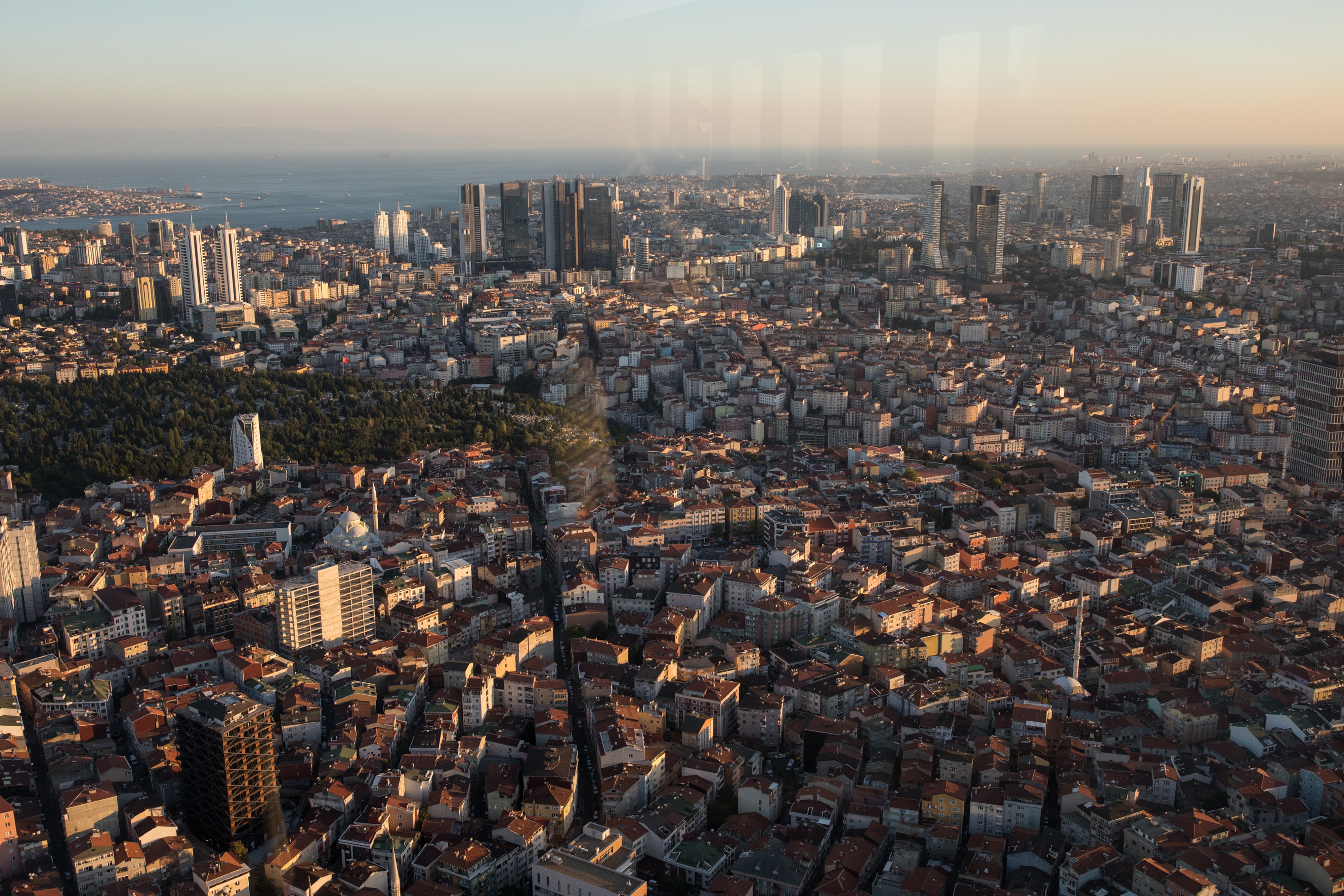
TURKEY
Three years after a spike in terrorism shattered Turkey’s travel industry, the country is making a bold comeback. From January to October 2018, the number of visitors increased 22 percent from the same period the year before, to 36 million; that will only rise now that the first phase of a massive airport project has opened in the country’s biggest city. By the time it’s fully operational, Istanbul Ataturk will aim to be one of the world’s busiest hubs, shuttling more than 90 million people annually. The savviest of them will make a bee-line for the coast.
History buffs can explore the port town of Canakkale, where the new Troy Museum—at the fabled archaeological site—houses 5,000 artifacts, including a 13th century copy of The Iliad and a Polyxena sarcophagus from 500 B.C. Scenesters can head to Bodrum to scope out high-profile openings from Six Senses and Ian Schrager’s Edition Hotels. With slick infinity edge pools facing the Aegean, celebrity-approved beach clubs, spas with steamy hammams, and sunbathing nooks shrouded by olive groves, the see-and-be-seen destination is a revitalized alternative to St-Tropez and Mykonos.
When to go: Istanbul is charming in April, during the city’s international tulip festival. And value peaks during the shoulder-season months of June and September.When not to go: In July and August, the busiest tourism months, hotel rates are as sky-high as the temperatures.Whom to call: Karen Fedorko Sefer of Sea Song Tours
MADHYA PRADESH, INDIA
India is making great strides in conservation. The subcontinent is home to the largest population of wild tigers, whose worldwide numbers dipped to just over 1,400 in 2006. But with new reserves and better education, those numbers are expected to top 3,000 when the next Bengal census is released later this month.
For travelers, that means sightings have gone from being unreliable to almost guaranteed—particularly in Madhya Pradesh, an 80-minute flight from Mumbai. Not only does the state have more protected parks than neighboring Rajasthan, but it’s also less crowded. And new mobile camp experiences promise to take guests deep into the wild: Kaafila Camps sets up plush outposts in underexplored swaths such as Kuno-Palpur in the northwest and Kalinjar in the northeast, so you can track real-life Shere Khans in areas that look untouched by human hands.
When to go: If you have to pick a single month, make it February, when both wildlife sightings and cultural events abound. (Otherwise, any time between November and March will do.)When not to go: It starts getting warm in mid-April, and the national parks are closed during monsoon season, from June to October.Whom to call: Chinmay Vasavada of the Explorations Company
FORT LAUDERDALE
For the ease of a Miami getaway without the 24-hour party vibe, head north. Once sleepy, Fort Lauderdale and Palm Beach are waking up now that restaurants such as Florie’s have arrived. The 200-seat Mediterranean-inspired spot in the renovated Four Seasons Resort Palm Beach is by Mauro Colagreco, whose Mirazur in the south of France is considered one of the world’s best restaurants.
Another worth checking out? Dune, a dining concept in Fort Lauderdale from Auberge Resorts Collection that spotlights charcoal-grilled dishes and Napa Valley wines. One hotel is even betting the beach will no longer be the area’s primary draw: The 209-room Dalmar, in the heart of Las Olas, Fort Lauderdale’s culture and retail district, has a retro vibe, with palm-printed wallpapers and midcentury brass chandeliers. But its rooftop bar, run by the New York-based Death & Co team, is so of-the-moment it’s luring locals from Miami—now only 30 minutes away on Richard Branson’s lightning-fast (and quickly expanding) Virgin train.
When to go: October to April, when the humidity drops and the social calendar is full of events, including the Las Olas Art Fair and the Fort Lauderdale Boat Show.When not to go: Rain and hurricanes are most likely to ruin your trip in September.Whom to call: Jesse Taylor of Going Places Travel
PARIS
The City of Light never needs a sales pitch, but 2019 brings several cultural developments that may lure you away from the typical attractions. When the Gabrielle Chanel Rooms open later this year with 200,000 garments on the lower level of the Palais Galliera, the $6.5 million space will be the first to permanently showcase multiple fashion designers. (The House of Chanel has largely financed it.)
Also in 2019, the Pinault Collection will be unveiled at the Bourse de Commerce, a 250-year-old structure inspired by the Pantheon. After more than a decade of work by Japanese architect Tadao Ando, it’s now a temple to contemporary art. It will include 3,000 works from the personal collection of François Pinault, the billionaire founder of Kering, and a restaurant run by the father-and-son team of Michel and Sébastien Bras—all a stone’s throw from the Louvre.
As for where to sleep, skip the palace hotels for one of the 30 rooms at J.K. Place, an Italian boutique brand known for drawing the cool crowd wherever it goes. This spring it’s importing its signature residential appeal (along with a Sisley spa and an indoor pool) to the Left Bank, near the Musée d’Orsay.
When to go: The shoulder seasons—April to June; September and October—deliver Paris at its finest, with minimal crowds and optimal weather.When not to go: July and August, when the city is hot and overrun with tourists.Whom to call: Yaron Yarimi of Frosch
SAVANNAH
Long an artsy also-ran to Charleston, S.C., Savannah, Ga., has a food scene that’s emerging into the national spotlight thanks to the Grey—once a segregated bus station, now an African-inspired restaurant serving Senegalese-spiced lamb and curried roast chicken. The team behind it also recently opened the Grey Market, a lunch-counter-slash-general-store. (Get the Sizzlin’ Smoky Pig sandwich served with an egg and pepper relish.) On the retail front, alumni from the Savannah College of Art and Design, which is celebrating its 40th year (and has a must-visit museum), have been sticking around after graduation to start exciting businesses, including leather maker Satchel and honey purveyor Savannah Bee Co. And now travelers can upgrade from small, Southern-style inns and B&Bs, if they wish: The Perry Lane arrived in the Historic District last June—it’s the city’s first high-luxury hotel, with 167 individually designed, supremely comfortable rooms. That was followed by the midcentury-styled Alida Hotel on the riverfront. A little farther east, a JW Marriott will open in June in an abandoned, century-old power plant. It will be surrounded by 4.5 acres of restaurants, shops, concert halls, and art galleries that, along with the hotel, represent a combined investment of roughly half a billion dollars.
When to go: Spring, to see the city in bloom and for the Savannah Music Festival (March 28 to April 13). If you’re a fan of all things Irish and green, the city hosts one of the largest St. Patrick’s Day parades in the country.When not to go: The heat and humidity can be unbearable July and August. And January brings the chance of ice storms.Whom to call: Becky Lukovic of Bella Travel Planning, LLC
COSTA RICA
A wild adventure in Costa Rica used to mean chasing waves up and down the sun-drenched coast. But new lodging in the country’s biodiverse interior will make the country an easy destination for nature lovers in the coming year. Deep within Arenal Volcano National Park, Nayara Tented Camp is a no-expenses-spared extension of Nayara Springs, arguably the country’s best hotel. It opens in the fall with 18 tricked-out tents with private plunge pools, all tucked into a dense jungle canopy that doubles as a private reserve for the area’s dwindling sloth population.
From the day bed on your deck, you’ll be able to scan the treetops for howler monkeys; venture further, and you can kayak past caimans in the Caño Negro River or hike over lava flows on the volcano’s active western side. Senda Monte Verde, meanwhile, is the latest opening from the eco-luxe Central American hotelier Cayuga Collection; it’s located steps from Monteverde Cloud Forest Reserve, home to more than 100 species of mammals, 400 species of birds, and 2,500 plants (including 450 types of orchids). A hanging bridge connects the property’s 24 rooms to Aguti Wildlife Refuge, where guides can point out such unique local species as the olingo (a small bear with a monkeylike tail) or the resplendent quetzal (the country’s jewel-toned national bird).
Want to go even further off the beaten path? Origen Escapes, a bespoke travel company that specializes in Costa Rica’s wild places, has raised the bar for immersive, conservation-minded expeditions. Guests can learn to track animals or help scientists tag and release baby hammerheads in the Rio Coto.
When to go: Early December and May, the start and end of high season. You get great weather without paying top dollar. When not to go: You’ll get clear mornings—but heavy showers every afternoon—during the rainy season, from June to October. Whom to call: Jack Ezon of Ovation Vacations
POLAND
Everywhere from Krakow to Lodz, Poland’s next generation is embracing a wild streak of avant-garde creativity—largely a rebuttal to the nationalist government’s far-right rhetoric. Get a front-row seat to the action by staying at Puro Hotels, a boutique brand that’s growing fast and promoting local artists in each of its destinations.
In the seaside town of Gdansk, Puro’s 211-room property welcomes guests with a mural by Polish painter Seikon in its eight-story-high atrium; in its forthcoming Krakow hotel, rooms will be decorated with works by five local illustrators who were commissioned to have an “emotional reflection” on their hometown.
Focus your attention on the capital of Warsaw; it’s emerging as a cultural hotbed with up-all-night beach clubs along the Vistula River and coffeeshop-lined boulevards near the city’s modern art museum. A Puro opens there in April, but if you’re taking your bubbe on an ancestral pilgrimage, put her up at the Raffles instead: The palatial property, fresh off a yearslong renovation, has a gilded, midcentury aesthetic in its rooms, suites, and spa.
When to go: For pleasant weather and fewer tourists, go in April or October. And for low hotel rates, plan to see Warsaw on a weekend, after the city’s business travelers have checked out.When not to go: Skip July and August, when cruise ships flood Gdansk. Though winter is cold and gloomy, it’s an opportune time to get the cities to yourself.Whom to call: Gwen Kozlowski of Exeter International
VIETNAM
With roughly a third as many international visitors as Thailand, Vietnam is often left in the shadow of its popular neighbor. But the country has seen a 30 percent surge in tourists in the past year, with many of them are flocking to Vietnam’s 2,000 miles of tranquil, powdery coastline.
At the month-old Anantara Quy Nhon Villas, midway between Ho Chi Minh City and Da Nang on the less-traveled central coast, guests can take in panoramic views from one of 26 ocean-facing bungalows. Farther south, the JW Marriott Phu Quoc Emerald Bay Resort & Spa is a tropical retreat on a former prison island, now with a protected national park. Most peaceful of all will be Legacy Yen Tu, a resort in a once-abandoned village in the Dong Trieu mountains near the limestone cliffs of Ha Long Bay. Painstakingly re-created by architect Bill Bensley, it opens in January with a Japanese onsen-inspired spa and a museum chronicling the area’s rich Buddhist history.
When to go: December, before the Christmas rush. Rainy season is ending (though it may still drizzle in Hanoi), the temps are cool, and the crowds have not yet descended.When not to go: Christmas, Easter, and Vietnamese New Year (in early February) can be quite crowded. And if you’re heading to central Vietnam, skip October: it’s typhoon season.Whom to call: Nathan Lane of Butterfield & Robinson


